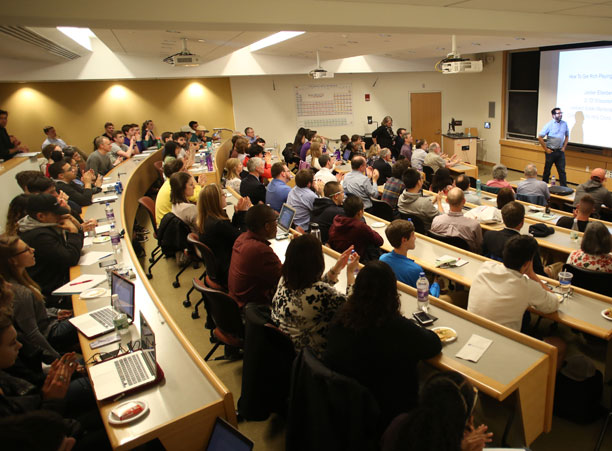
Speaking to students and faculty in a packed-to-the-brim lecture hall, mathematician Jordan Ellenberg offered the 24th annual Leonard C. Sulski Memorial Lecture on April 19 at the College of the Holy Cross.
Ellenberg, who is the John D. MacArthur Professor of Mathematics at the University of Wisconsin, explored the interplay of the lottery and how this phenomenon relates to the mathematical fields of probability, geometry and combinatorics in his lecture titled “How to use math to get rich in the lottery (*will not actually help you get rich in the lottery).”
The annual lecture, co-sponsored by the mathematics and computer science department in honor of Holy Cross mathematics professor Leonard C. Sulski, seeks out a speaker who is both an accomplished mathematician and an engaging lecturer. For Sharon Frechette, associate professor of mathematics and a member of the Sulski lecture organizing committee, inviting Ellenberg to speak was a no-brainer after she heard him give a version of this lecture at the Joint Mathematics Meeting in January 2015.
During the lecture, Frechette recalls that Ellenberg was lively and engaged the audience.
“When he asked us to participate in a small-scale version of the lottery he was talking about, people all over the room pulled out paper and pencil and played along. The room was abuzz!” said Frechette. “It was a wonderful evening of community and excitement for mathematics.”
Ellenberg, whose research interests include arithmetic algebraic geometry and number theory, earned a Ph.D. from Harvard University in 1998, before going on to teach at Princeton University from 1998-2005. In addition to publishing numerous research articles in prestigious journals, Ellenberg is the author of a general interest book about the mathematics of everyday life titled "How Not To Be Wrong: The Power of Mathematical Thinking" (Penguin Press 2014). He was awarded the 2016 Euler Book Prize by the Mathematical Association of America for this book, which appeared on the New York Times best seller in 2014.
24th Annual Sulski Lecture Given by Prominent Mathematician
Jordan Ellenberg explores probability, geometry, combinatorics and the lottery
Read Time
1 Minute